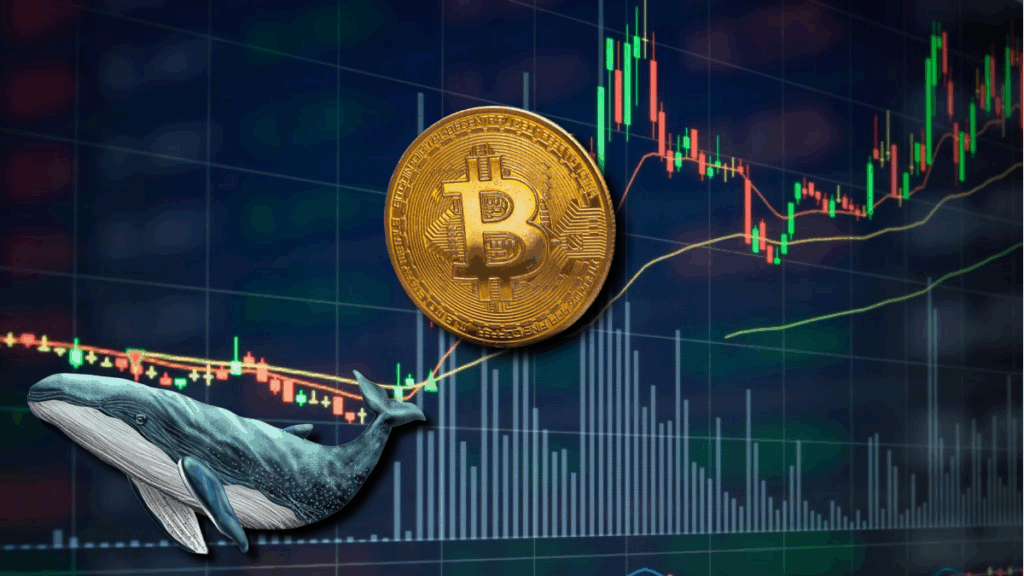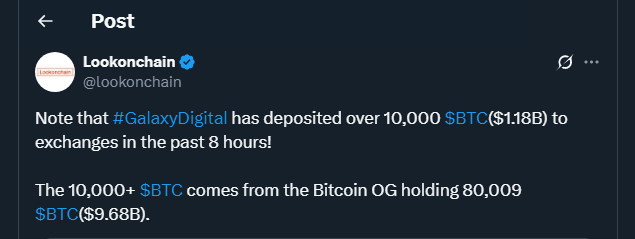TL;DR
- A long-inactive Bitcoin whale linked to the Satoshi era has transferred over $1.1 billion worth of BTC to major exchanges, including Binance, Coinbase, and OKX.
- Galaxy Digital managed the transactions, liquidating nearly 30,000 BTC while retaining a sizable portion.
- Despite fears of a market downturn, analysts argue that the transfer could be absorbed smoothly, highlighting growing institutional demand and shifting market dynamics.
A once-silent Bitcoin whale has reawakened after more than a decade, moving significant funds across the crypto landscape. On Friday, blockchain sleuths observed that Galaxy Digital, the crypto investment giant led by Mike Novogratz, shifted almost 30,000 BTC from the legendary stash to centralized exchanges like Binance and Coinbase. The transactions come just days after the whale had entrusted Galaxy with an eye-watering 80,201 BTC, originally mined in the early days of Bitcoin.
This sudden flurry of activity triggered speculation about a possible price dip as Bitcoin briefly slipped below $115,000, marking a 3% drop. Yet seasoned analysts remain calm, pointing out that dormant whales shifting holdings do not always cause dramatic market swings. Data from Arkham Intelligence and Lookonchain confirm that about $1.1 billion has already landed on exchanges, with Galaxy Digital holding back over $2 billion in BTC reserves.
Institutional Confidence May Cushion Volatility
Some market watchers argue that these massive transfers may actually signal a strengthening ecosystem. The launch of Bitcoin exchange-traded funds in the United States and broader adoption by companies like BitMine Immersion and SharpLink Gaming reflect renewed institutional appetite for crypto exposure. Galaxy’s CEO Novogratz remains upbeat, projecting Bitcoin could climb as high as $150,000 this year, even while suggesting Ether may post stronger returns in the near term.
Meanwhile, the move has stirred debate about Bitcoin’s traditional cycle theory. CryptoQuant’s CEO Ki Young Ju declared that old whales selling to fresh long-term holders, instead of retail traders, proves the cycle model may be obsolete. If this shift holds true, large dormant wallets re-entering the market could represent preparation for an upcoming wave of institutional inflows rather than an exit ahead of a bear market.

As Galaxy Digital pulls back billions in stablecoins after its BTC deposits, onchain analysts believe the market has ample liquidity to absorb the remaining coins without triggering panic selling. For many in the crypto space, the whale’s return is a reminder that Bitcoin’s early believers still have an influential role to play as the asset matures in a more regulated and institutionalized environment.











